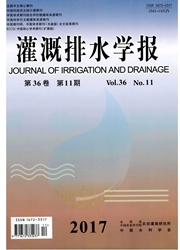

 中文摘要:
中文摘要:
以吉林省1929、1941年选育的2个老大豆品种元金宝和金元1号及1999、2000年选育的两个新大豆品种吉农7号和吉林45为试材,在相同栽培管理模式下,研究了不同时期育成品种不同节位叶片的光合特性和叶面积的变化。结果表明:不同时期育成品种在不同节位、不同时期叶片生理特性均存在差异,生殖生长阶段新选育品种的净光合速率(Pn)、气孔导度(Gs)、叶面积、水分利用效率(WUE)更具有优势,不同生育阶段各节位Pn也均高于老品种;新品种叶面积表现为苗期增长较慢,在生殖生长初期阶段增长加快,中后期又趋于平稳,叶面积呈"慢-快-慢"的发育特征,保障了群体结构更趋合理,继而延长了叶片功能持续期。说明叶片光合性能和叶面积发育动态协调,是新品种高产的主要原因。
 英文摘要:
英文摘要:
Four representative soybean varieties were used as materials, i.e., Yuanjinbao bred in Jilin Provincein 1929, Jinyuan 1 bred in 1941, Jinong 7 bred in 1999, and Jinong 45 bred in 2000. Changes of the net photosyn-thetic traits and the area of leaves at different nodes were studied. Results showed that physiological characteristicsof leaves of different varieties at different nodes and different stages were different. At reproductive stage, net photo-synthetic rate(Pn), stomatal conductance(Gs), leaf area and water use efficiency(WUE) of contemporary soybean va-rieties were higher than that of early soybean varieties. The Pn of contemporary soybean varieties were higher thanthat of early soybean varieties in each node at different stages. The leaf areas of new varieties increased slowly inseedling stage. It increased rapidly in early of reproductive stage and then increased steady. The‘slow-rapid-slow'pattern of leaf area growth ensured a proper canopy structure. The length of leaf function prolonged. The main rea-son to high yield of new soybean varieties was that dynamic of photosynthesis and leaf development were harmoni-ously.
 同期刊论文项目
同期刊论文项目
 同项目期刊论文
同项目期刊论文
 期刊信息
期刊信息
